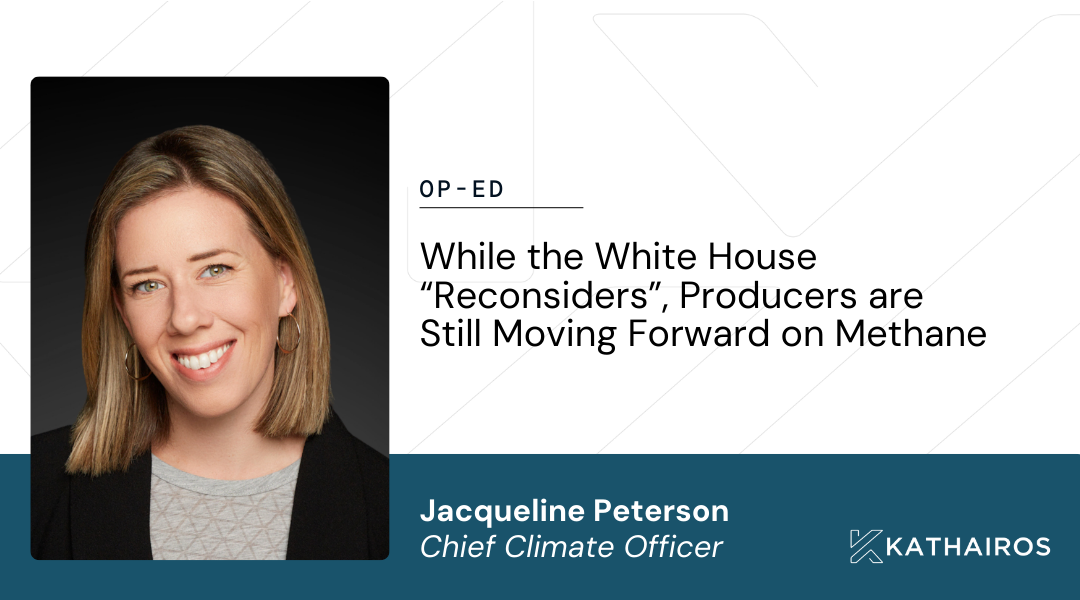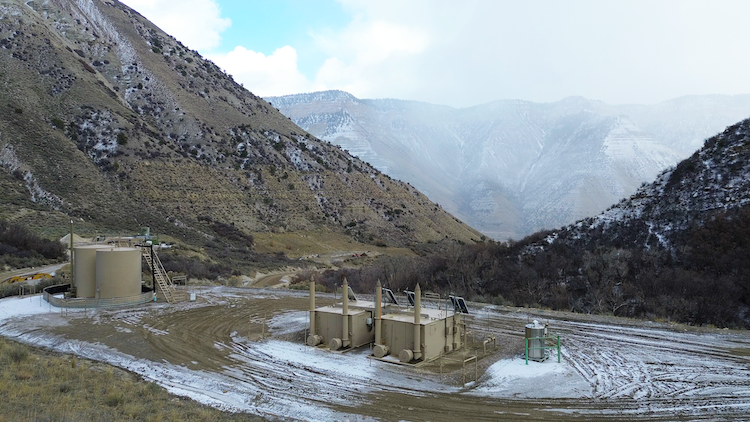.jpg)
Kathairos has emerged as the leading North American solution for methane elimination from pneumatics, with more than 1,000 systems in operation across North America and over 40 major oil and gas producer partners.
In this post
Engineers at MIT and the National Renewable Energy Laboratory (NREL) have designed a heat engine with no moving parts, with the ability to convert heat to electricity with over 40% efficiency- a performance better than modern steam turbines.
The heat engine is essentially a thermophotovoltaic (TPV) cell, similar to a solar panel’s photovoltaic cell, which collects high-energy photons from a white-hot heat source up to about 4,300 degrees Fahrenheit in temperature and converts them into electricity.
The goal? To incorporate the TPV cells into a grid-scale thermal battery, which would ideally absorb excess energy from renewable sources, like the sun, and store this energy in heavily insulated banks of hot graphite. When energy is needed, TPV cells would then convert the stored heat into electricity, and dispatch energy to a nearby power grid.
The research team has now successfully demonstrated the main parts of the TPV cell system in separate, small-scale experiments and are working to integrate the parts to demonstrate a fully operational system. From there, the objective is to scale up the system to be able to offer a way to achieve a fully decarbonized power grid, supplied entirely by renewable sources.
“Thermophotovoltaic cells were the last key step toward demonstrating that thermal batteries are a viable concept,” says Asegun Henry, the Robert N. Noyce Career Development Professor in MIT’s Department of Mechanical Engineering. “This is an absolutely critical step on the path to proliferate renewable energy and get to a fully decarbonized grid.”
JUMPING THE GAP
Over 90% of the world’s electricity comes from coal, natural gas, nuclear energy and concentrated solar energy. For a century, steam turbines have been the industrial standard for converting such heat sources into electricity.
On average, around 35% of heat is reliably converted into electricity by steam turbines, going up to as much as 60%. The issue? These turbines are restricted by moving parts that are temperature-limited, making them incapable of using heat sources hotter than 2,000 degrees Celsius.
Because of this, scientists have begun to look into solid-state alternatives, or heat engines with no moving parts, as these could theoretically work efficiently at higher temperatures with fewer maintenance costs.
Scientists see TPV cells as a promising route toward efficient solid-state heat engines. These cells could be made from semiconducting materials with a particular bandgap, or the gap between a material’s valence band and conduction band… say what?
Simply put, if a TPV cell absorbs a light particle with enough, it can cause an electron to move across the bandgap, where it can conduct and generate electricity.
To date, the majority of TPV cells have only managed to reach 20-30% efficiency, due to being made of low-bandgap materials, which convert lower temperature, low energy photons, therefore resulting in less efficient energy conversion.
WE SEE THE LIGHT
In his and his colleagues’ new TPV design, Henry aimed to capture higher-energy light particles from a higher-temperature heat source, which would result in more efficient energy conversion. To do this, the engineers used higher-bandgap materials and multiple material layers, or junctions, compared with existing designs.
So how does this novel design work?
The cell has three main sections: a high-bandgap alloy, which sits over a slightly lower-bandgap alloy, underneath which is a mirror-like layer of gold.
The first layer captures a heat source's highest energy photons and converts them into electricity, while lower energy photons that pass through the first layer are captured by the second and converted to add to the generated voltage. Any photons that pass through this second layer are then reflected by the mirror back to the heat source, rather than being absorbed as wasted heat.
The team used a heat flux sensor, which directly measures heat absorbed from the cell, to test the TPV cell’s efficiency. Over a range of 1,900 to 2,400 degrees Celsius, the new cell design maintained an efficiency of around 40%!
The next step? Scaling the technology. For a grid-scale thermal battery system, the cells from the experiment must scale up from a square centimeter to about a quarter of a football field in size, operating in large climate-controlled warehouses to draw power from stored banks of solar power. The team cites existing large-scale photovoltaic cell infrastructure as potential ways to manufacture these thermal cells at a commercial level.
“There’s definitely a huge net positive here in terms of sustainability,” Henry says. “The technology is safe, environmentally benign in its life cycle and can have a tremendous impact on abating carbon dioxide emissions from electricity production.”
Explore more posts from Kathairos
.jpg)
Decarb Digest, Issue 01: Discover Why Energy Leaders Aren’t Waiting on Washington

Op-Ed: While the White House “reconsiders”, producers are still moving forward on methane

